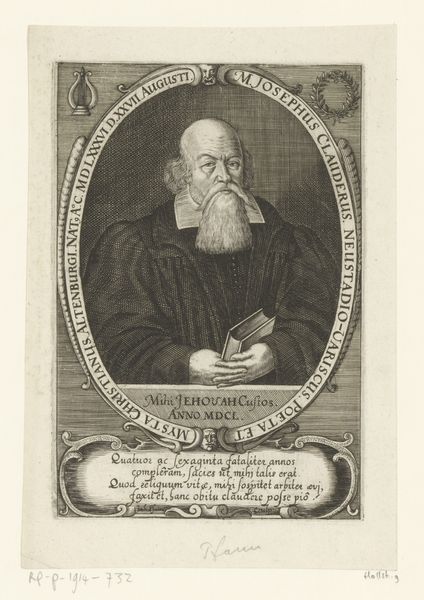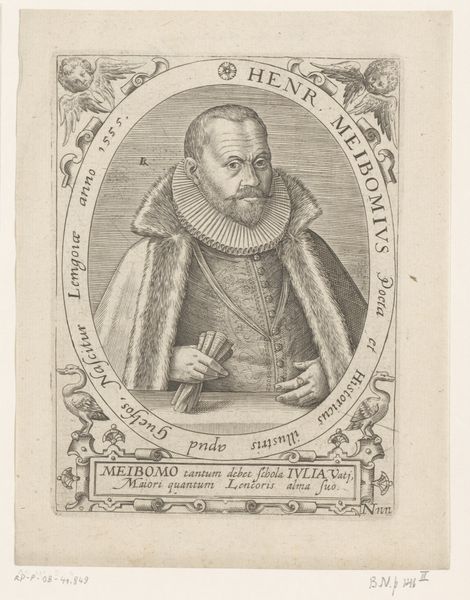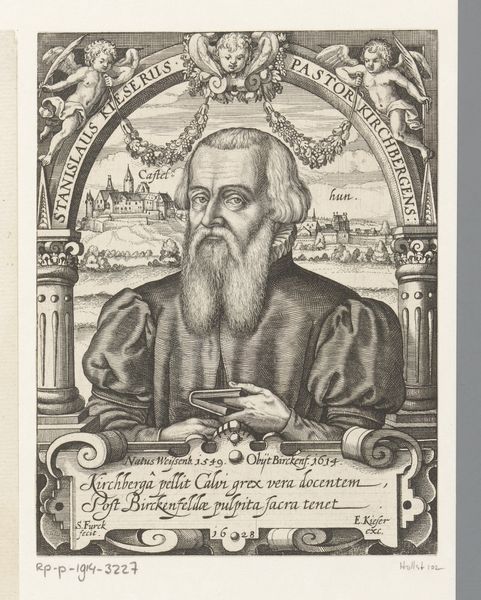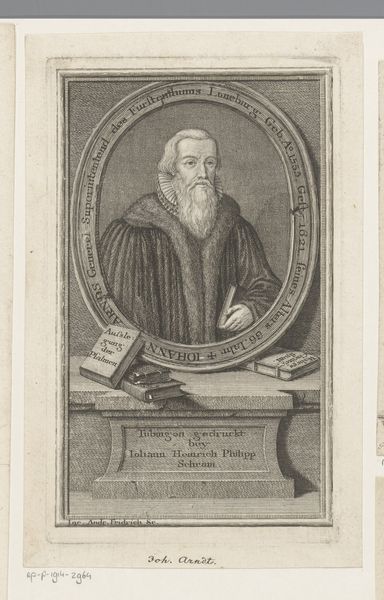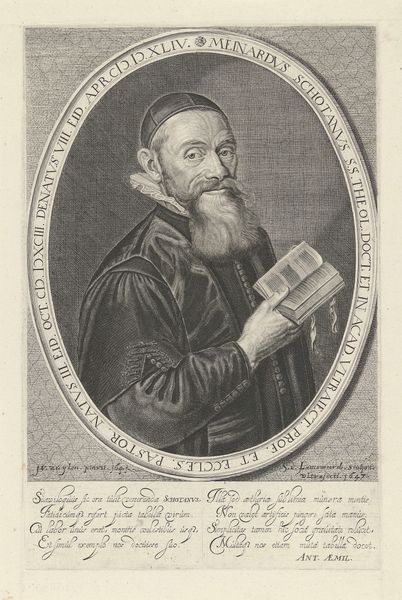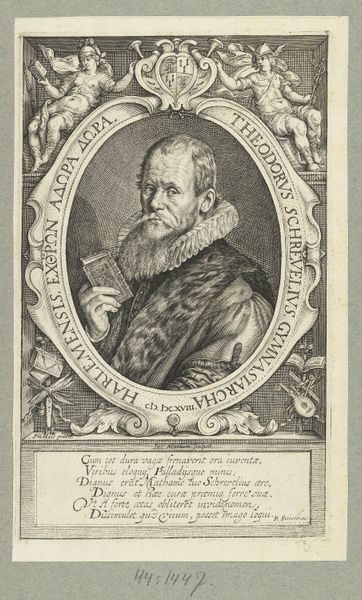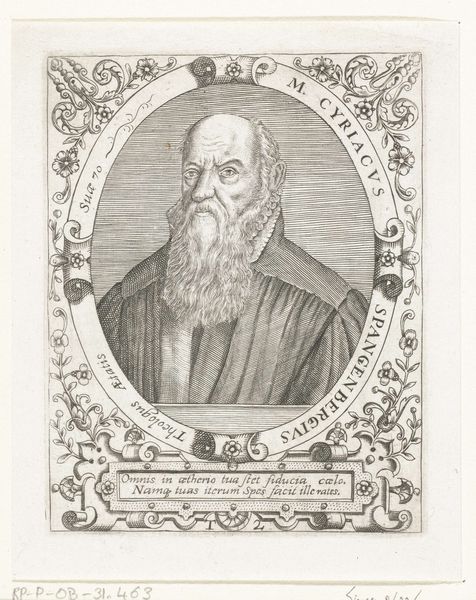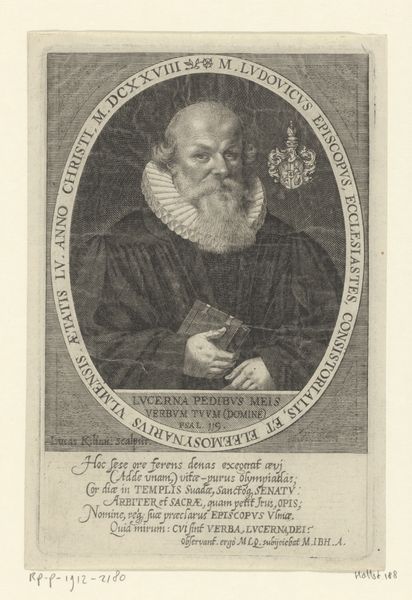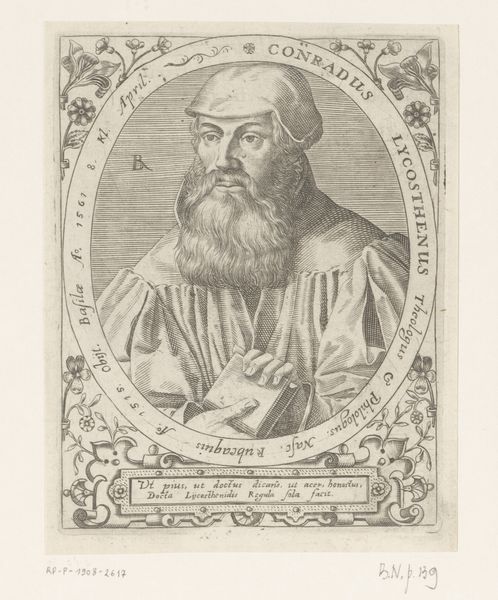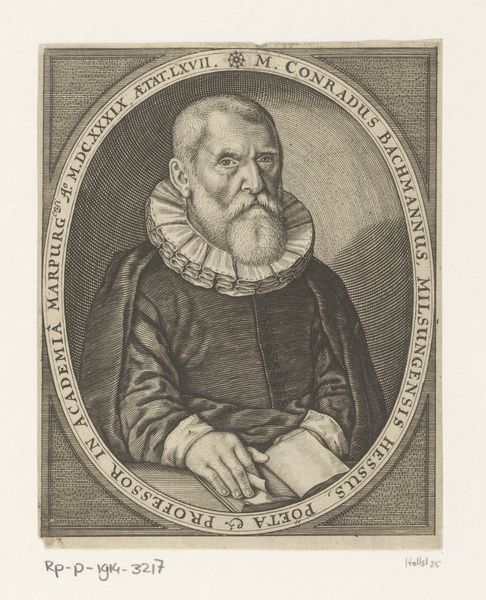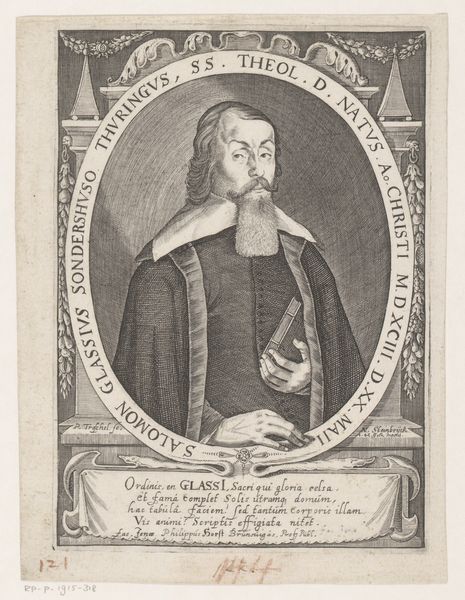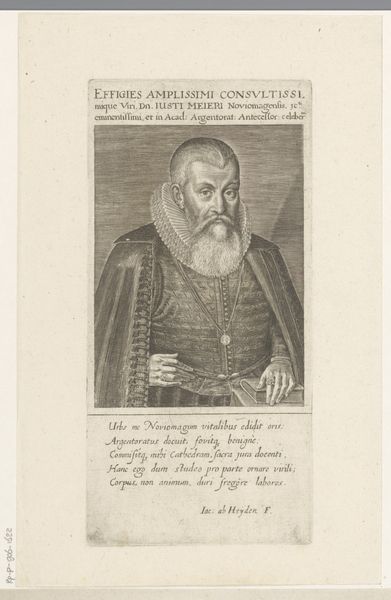
graphic-art, print, engraving
#
portrait
#
graphic-art
#
baroque
# print
#
old engraving style
#
personal sketchbook
#
sketchbook drawing
#
engraving
#
realism
Dimensions: height 159 mm, width 100 mm
Copyright: Rijks Museum: Open Domain
Curator: Heinrich Ulrich, whose studio this print emerged from, was quite active creating imagery for the academic elite of the 17th Century. We are currently looking at "Portret van Georg Volland," which scholars estimate to date between 1631 and 1671. This piece is currently held at the Rijksmuseum. Editor: It strikes me as incredibly detailed and formal, even rigid. The subject’s expression seems caught between thoughtfulness and apprehension, and the texture of that ruff is incredible for a print. Curator: The setting for portraiture certainly codified and professionalized during this era, serving a growing sense of social consciousness. What Ulrich renders is also an intriguing visual biography that points to the sitter's interests and aspirations, beyond a pure likeness. Editor: Absolutely. Volland is shown with a book open to a botanical illustration. That immediately marks him as a man of science or perhaps medicine—a profession intertwined with the symbolic properties of plants and the physical realities they affect. The plants themselves, so delicately rendered, hint at themes of healing and knowledge. Curator: Exactly. It emphasizes how status in 17th-century Europe wasn't purely about lineage, but about learned authority. Portraits became powerful tools for constructing and communicating identities. Notice the prominence given to the inscription; language and image are interwoven to elevate Volland’s status as a learned apothecary. The inscription at the bottom reads: “He reveals himself; however, his virtue cannot be portrayed.” Editor: It adds another layer to the reading of the image. It acknowledges the limits of portraiture while paradoxically striving to capture the essence of the sitter. In addition, look at the top of the print, at Georgius's date of death as well as birthdate are listed. It gives a sense of completeness. The framework of imagery makes this artwork feel so formal. Curator: These portraits became public endorsements—visual assertions of standing within these tight-knit intellectual and political circles. They reveal much about the interplay of art, science, and societal standing in the Baroque period. Editor: The artist created not just a likeness, but a statement on how he was positioned within his world. Curator: Precisely, these images became markers for how people navigated their professional, political, and social spheres. They are vivid embodiments of that dynamic era.
Comments
No comments
Be the first to comment and join the conversation on the ultimate creative platform.

